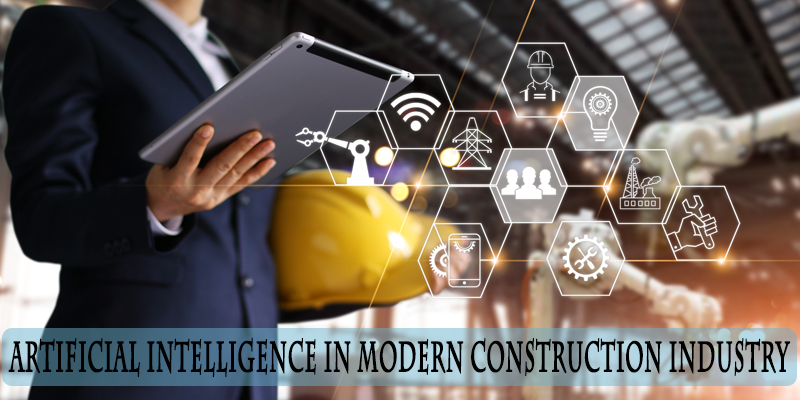Artificial Intelligence in Modern Construction Industry
The COVID 19 pandemic has affected miserably in every sector. The GDP of the country also got impacted due to high death rate, and this health crisis will stay as a harsh memory for long time. If we talk about our living style, pandemic has brought a drastic change into our daily work manner; all major industries have changed their work culture. Construction industry always is on lag for accepting technological development, but in this challenging situation it has given away a great level of versatility and flexibility.
Artificial Intelligence is changing the construction world in every possible way during the pandemic.
Monitoring Construction Sites with AI Software
During lockdown, many projects are doing well and the team leaders of the project are constantly looking out for reliable sources to maintain the safety of their workforce. So, with the help of artificial intelligence (AI) a modern automatic video observation setup was made to monitor the safety of the workers.
Enhance Collaboration with Augmented Reality (AR)
With AR, architects are even ready to see their structure plans in the specific area wherein it will be assembled. This permit engineers to draw their plans inside the assigned geology and gives them information about the site that wasn’t already reachable to them. The trend of Augmented Reality is allowing construction workforce to work remotely and submit projects on time.
Become Paperless
The idea of a paperless corporate life was buzzing around for a long period of time, but not many companies have achieved the desired result. Nowadays, to maximize contactless communication, employees prefer digital platforms more than paper in the construction business.
As most of the people are working from home to avoid social gatherings, it would not be incorrect to say that they are finding easier in working through AI platforms rather than paperwork.
Constructing Smart Cities
Due to economic slowdown caused by pandemic, the idea of constructing smart cities has become a dream for some countries. The engineers are using latest technology tools to respond to COVID-19 with the function of data analytics, artificial intelligence and sensor technologies.
Cyber Security Method
Nowadays, as the construction industry is moving towards digital technology, requirement for cyber security is also rising exponentially. Due to pandemic, workforces are operating remotely on a less secure wireless connection so the proper cyber security is very much needed to protect the data and other information’s.
Digital Construction
Construction associations that are adequately gone through considerable advanced change thought that it was much simpler to balance between social distancing and work-from-home circumstances. This is applicable for both off-site and on location work because of the accessibility of linked construction tech arrangements, utilizing which teams can communicate up rapidly. Such arrangements allow all construction groups to work more productively and successfully.
Post Construction Support
After the construction gets completed building managers can collect information about the structure through drones, sensors, AI powered algorithms and other wireless technologies. Managers can track the performance of a bridge, building, roads and everything that are on progress. This implies AI can be utilized to monitor issues, decide when precaution should be taken, or even direct human conduct for ideal security and safety.
Future of AI in Construction Industry
In modern buildings, AI can be used to map the way for plumbing and electrical systems. Construction Company are using AI to develop worksite safety, track the real time performance of machinery, objects and workers as well on the site and alert controller for construction errors, productivity issues and safety issues.
In spite of the forecasts of huge unemployment, AI is probably not going to change the human labour force. However, it will adjust plan of actions in the construction business, reduce mistakes, lower the chances of site injuries, and make building tasks more proficient.

